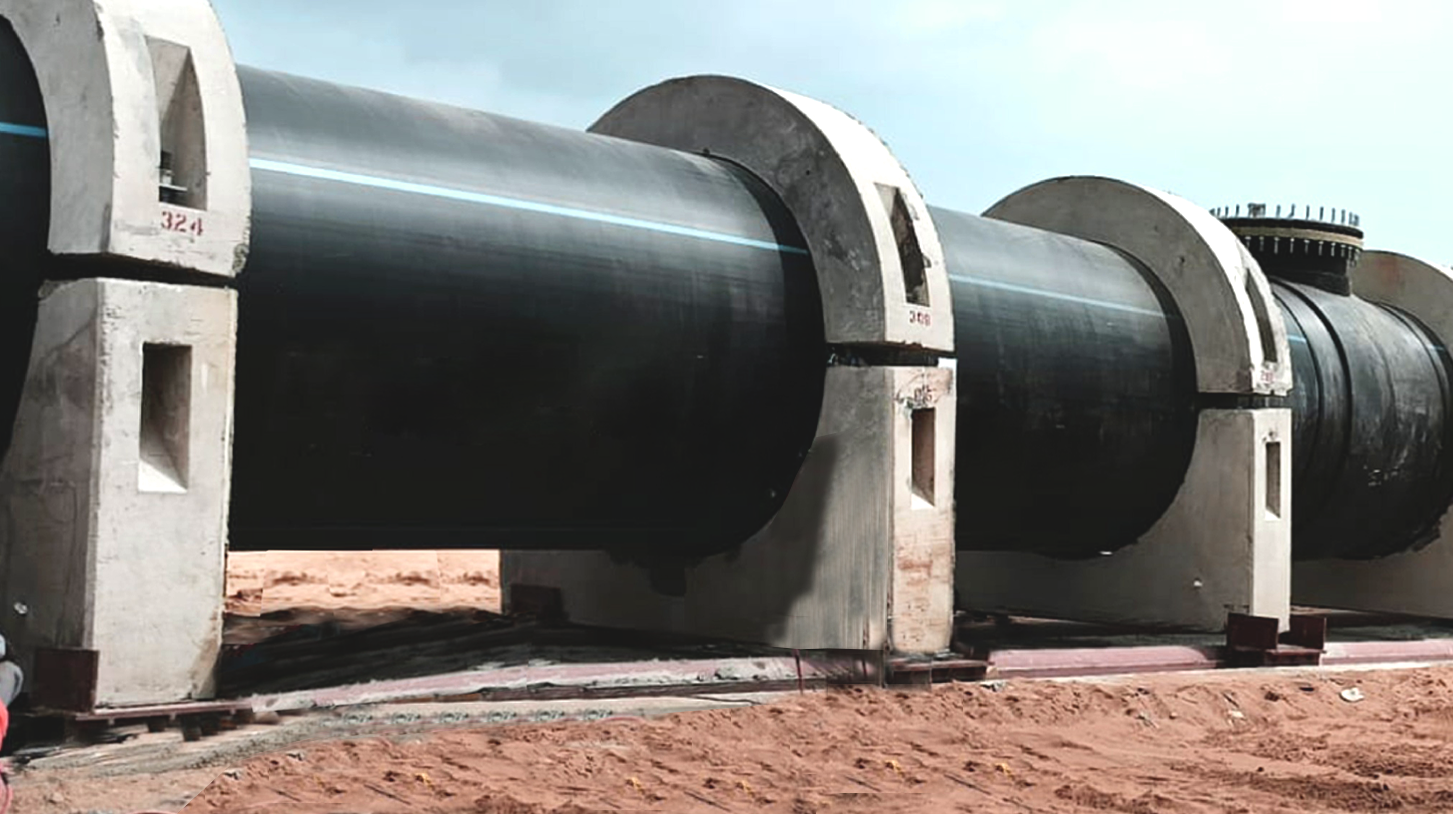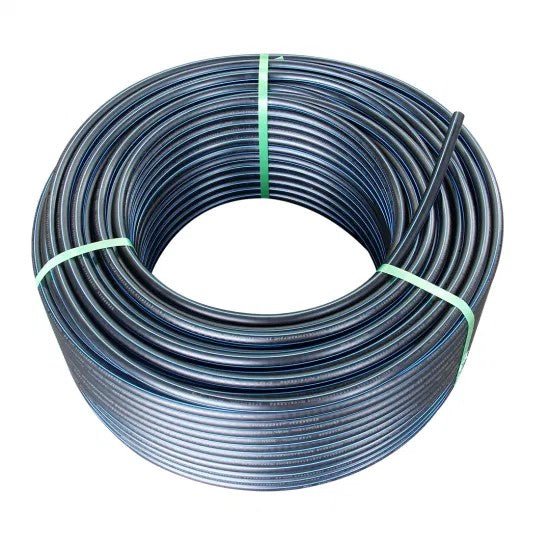Why Builders Prefer hdpe pipe in stock Midland TX for Immediate Projects
Check Out the Production Refine Behind High-Quality HDPE Pipeline and Its Applications
The manufacturing procedure of high-grade HDPE pipelines is complex and systematic. It begins with the choice of raw materials that enhance efficiency. Following this, ethylene undertakes polymerization to create resin, which is then formed via extrusion. Quality control is extremely important, making certain that the end product fulfills strict requirements. Nonetheless, the journey of HDPE pipelines doesn't end with manufacturing. Their applications across different markets reveal a more comprehensive importance worth analyzing.
Understanding HDPE: Residences and Advantages

High-density polyethylene (HDPE) is a flexible polycarbonate known for its toughness and resistance to various environmental elements. This material exhibits exceptional tensile stamina, making it suitable for requiring applications. Its low-density structure adds to a lightweight product, facilitating simplicity of handling and installation. HDPE also showcases exceptional resistance to chemicals, which minimizes destruction when subjected to harsh substances.
The product's reduced moisture absorption further enhances its long life, making it excellent for usage in pipes and storage space containers. Additionally, HDPE is immune to ultraviolet (UV) radiation, making sure that items keep their integrity even when revealed to sunlight. In addition, its adaptability permits the development of intricate shapes without compromising strength. The environmentally friendly nature of HDPE, usually originated from recycled materials, includes to its charm, promoting sustainable techniques in manufacturing. Overall, these homes and advantages make HDPE a preferred choice for numerous industrial and consumer applications.
Basic Material Option for HDPE Manufacturing
The choice of raw materials for HDPE manufacturing is important to validate the final product fulfills the preferred requirements and high quality requirements. High-density polyethylene (HDPE) is primarily created from polymerized ethylene, acquired from nonrenewable fuel sources such as gas or unrefined oil. The quality of these feedstocks significantly affects the mechanical and thermal residential or commercial properties of the last HDPE.
Additives also play a considerable duty in improving HDPE's efficiency, consisting of antioxidants, UV stabilizers, and colorants, which enhance durability and resistance to ecological variables. The option process need to think about not only the chemical composition of the raw materials yet additionally their processing characteristics to assure reliable manufacturing.
Additionally, the sourcing of basic materials need to prioritize sustainability and compliance with environmental laws, as liable techniques are imperative in today's market. Ultimately, careful raw material selection lays the foundation for generating top quality HDPE pipelines ideal for varied applications.
The Extrusion Process: Forming HDPE Pipeline
The extrusion procedure plays an important role fit HDPE pipelines, beginning with thorough material prep work methods that guarantee ideal circulation and consistency. Equally essential is the style of the die, which directly influences the final measurements and surface high quality of the pipeline. Together, these factors contribute significantly to the efficiency and top quality of HDPE pipeline manufacturing.
Product Prep Work Methods
Effective manufacturing of HDPE pipelines begins with precise material preparation techniques, particularly the extrusion process. During this stage, high-density polyethylene resin is initial dried out to get rid of wetness, making sure suitable circulation attributes. The resin is then fed into the extruder, where it undergoes home heating and melting, transforming into a viscous state. This heating procedure is meticulously regulated to maintain the product's stability and performance. The liquified HDPE is forced through a die, forming it right into a continual pipe type. Proper temperature management during extrusion is necessary, as it directly influences the material's buildings and the end product high quality. Once shaped, the HDPE pipeline is cooled down and cut to specified sizes, prepared for succeeding handling and applications.
Die Design Significance
Accuracy in die layout plays a crucial function in the extrusion procedure of HDPE pipes. The die functions as the final shaping device, directly affecting the pipe's dimensions, wall density, and surface finish. A properly designed die assurances consistent product flow, reducing issues such as irregularities and weak points. The geometry of the die have to be optimized to suit the particular buildings of HDPE, including its viscosity and thermal habits throughout extrusion. Furthermore, the cooling price of the material as it goes through the die can noticeably impact the pipe's architectural integrity. As a result, spending in sophisticated die technology is crucial for suppliers intending to generate top quality HDPE pipelines that fulfill sector standards and customer expectations.
Quality Assurance Measures in HDPE Production
Numerous aspects affect the quality of HDPE pipeline production, reliable high quality control steps are crucial to ensure consistency and dependability in the last item (hdpe pipe fittings Midland TX). Secret high quality control practices consist of rigorous material inspection, validating that the raw polyethylene satisfies recognized requirements for pureness and thickness. During the extrusion process, parameters such as temperature level, pressure, and cooling time are closely monitored to preserve dimensional precision and structural integrity
In enhancement, post-production testing is necessary; suppliers commonly conduct hydrostatic examinations to evaluate the pipe's stamina and resistance to stress. Visual examinations for surface defects additionally boost quality control. Qualification from appropriate requirements companies, like ASTM or ISO, supplies an additional layer of credibility. By implementing these thorough top quality control steps, manufacturers can minimize issues, improve performance, and make sure that the HDPE pipelines meet the certain requirements of various applications, eventually resulting in client satisfaction and rely on the product.
Applications of HDPE Pipeline Across Industries
HDPE pipelines are utilized across different sectors as a result of their sturdiness and versatility. In water distribution systems, they assure reliable shipment, while in wastewater administration, they give dependable options for waste transportation. Furthermore, agricultural irrigation networks gain from HDPE's resistance to read this corrosion and versatility, making it an ideal selection for contemporary farming techniques.

Water Distribution Systems
A substantial variety of industries rely upon high-density polyethylene (HDPE) pipelines for efficient water circulation systems. Understood for their durability and resistance to corrosion, HDPE pipes are widely made use of in community water system networks, agricultural irrigation, and industrial applications. Their lightweight nature promotes simple handling and setup, minimizing labor costs and time. In addition, HDPE pipes can suit different stress degrees, making them ideal for both low and high-pressure systems. hdpe pipe in stock Midland TX. The versatility of the material permits smooth combination right into existing infrastructure, lessening the need for considerable excavation. HDPE's resistance to chemical seeping warranties that the water supplied stays risk-free and clean, making it an ideal selection for preserving the quality of potable water across various industries.
Wastewater Monitoring Solutions
Efficient water circulation systems also lead the method for innovative wastewater management remedies, where high-density polyethylene (HDPE) pipelines play a substantial role. Distinguished for their sturdiness and resistance to corrosion, HDPE pipes are excellent for carrying wastewater in various settings. Their versatility enables for very easy installation in complicated settings, lessening the demand for considerable excavation. Additionally, HDPE's smooth interior surface decreases rubbing, enhancing flow prices and performance. These pipes are likewise immune to chemical leaching, guaranteeing that pollutants do not endanger the surrounding setting. Industries, municipalities, and treatment facilities progressively rely upon HDPE pipelines for their reliability and longevity, making them a recommended choice for modern wastewater management systems. This versatility highlights the vital relevance of HDPE pipelines throughout countless applications.
Agricultural Watering Networks
Agricultural watering networks profit considerably from using high-density polyethylene (HDPE) pipes, which provide reliable and reliable water shipment to crops. HDPE pipelines are light-weight, making them simple to transport and mount, while their flexibility allows for different setups in varied surfaces. These pipelines demonstrate exceptional resistance to deterioration, chemicals, and UV radiation, ensuring sturdiness in severe farming settings. Furthermore, their smooth indoor surface area reduces friction loss, enhancing water flow and decreasing energy prices linked with pumping. The durability of HDPE pipes, often exceeding 50 years, adds to lower upkeep and substitute expenditures. Farmers significantly rely on HDPE pipelines to boost irrigation efficiency and advertise lasting agricultural techniques, eventually leading to boosted crop returns and source conservation.

Future Patterns in HDPE Pipeline Modern Technology
As the demand for sustainable and effective facilities expands, developments in HDPE pipe innovation are positioned to change numerous markets. Arising patterns consist of the assimilation of wise modern technologies, such as sensing units and IoT capabilities, which assist in real-time surveillance of pipe problems, lowering upkeep prices and preventing leakages. In addition, the development of advanced manufacturing methods, such as 3D printing, is enabling the manufacturing of facility, tailored pipeline styles that accommodate particular job needs.
The focus on recycling and round economic climate methods is driving the advancement of HDPE pipelines made from recycled products, boosting sustainability. Boosted jointing techniques, such as electro-fusion and mechanical installations, are also improving installation performance and integrity. The growing emphasis on ecological guidelines is pressing manufacturers to take on greener manufacturing procedures, ensuring that HDPE pipes not just meet sector criteria but also cultivate an even more sustainable future for framework growth.
Frequently Asked Concerns
Just How Does HDPE Contrast to Other Plastic Products?
HDPE surpasses many other plastic products regarding sturdiness, chemical resistance, and flexibility. Its low density and high tensile toughness make it excellent for various applications, commonly going beyond choices in both efficiency and longevity.
What Are the Ecological Impacts of HDPE Manufacturing?
The environmental effects of HDPE production consist of greenhouse gas emissions, power consumption, and potential air pollution from making processes. Additionally, inappropriate disposal can bring about soil and water contamination, raising issues concerning long-lasting eco-friendly effects.
Can HDPE Water Lines Be Reused?
Yes, HDPE pipes can be reused. Several centers accept utilized HDPE for handling, changing it right into new items. This recycling adds to sustainability initiatives, reducing plastic waste while preserving resources and power in the manufacturing cycle.
What Is the Life Expectancy of HDPE Water Lines?

Exactly How Do Temperature Variants Affect HDPE Pipe Efficiency?
Temperature variations significantly impact HDPE pipeline efficiency, influencing adaptability and toughness. High temperature levels can lead to softening, while reduced temperatures might create brittleness, ultimately affecting the pipeline's longevity and clogged drain line suitability for numerous applications in varied atmospheres.